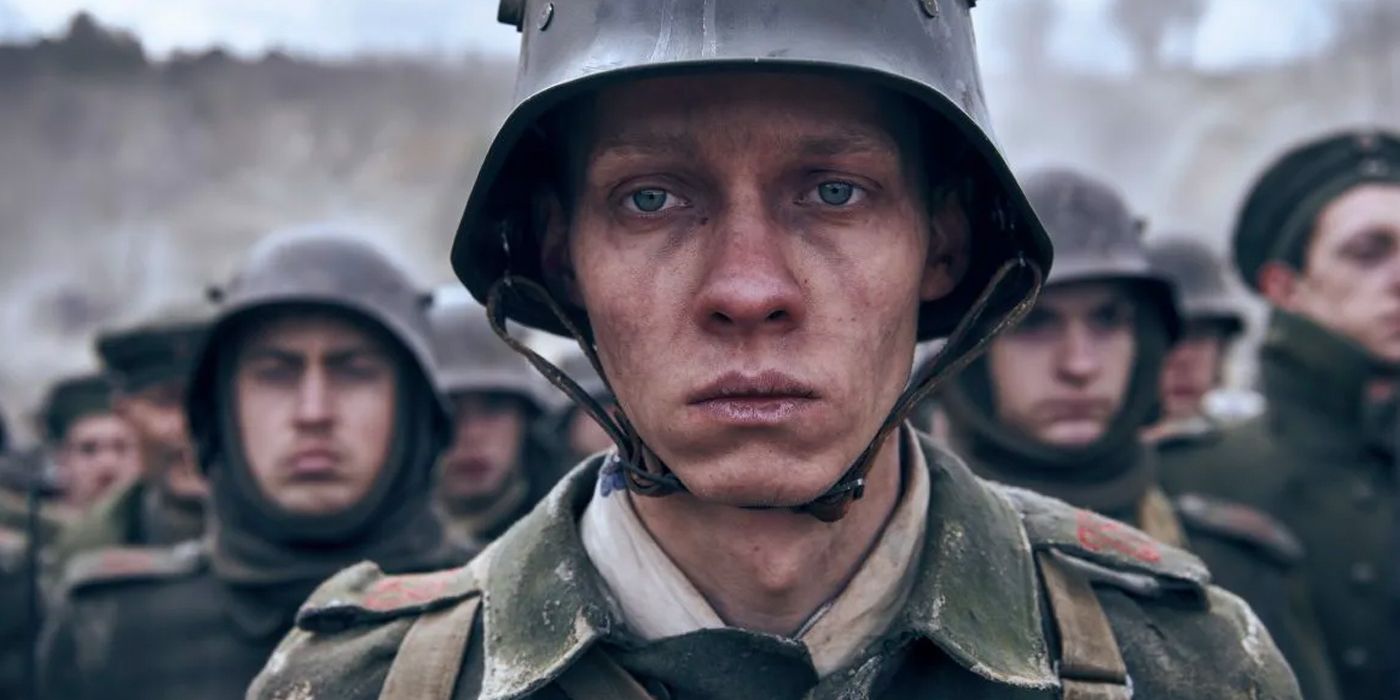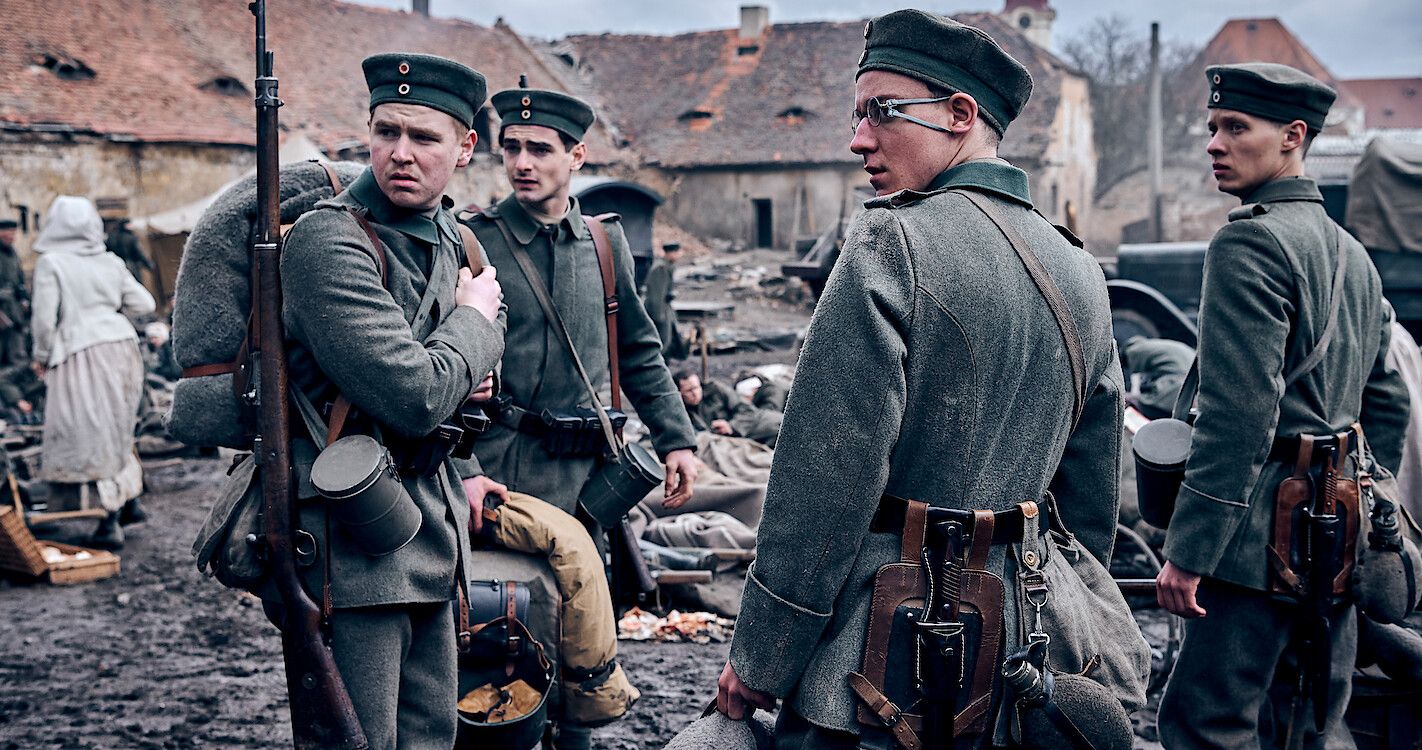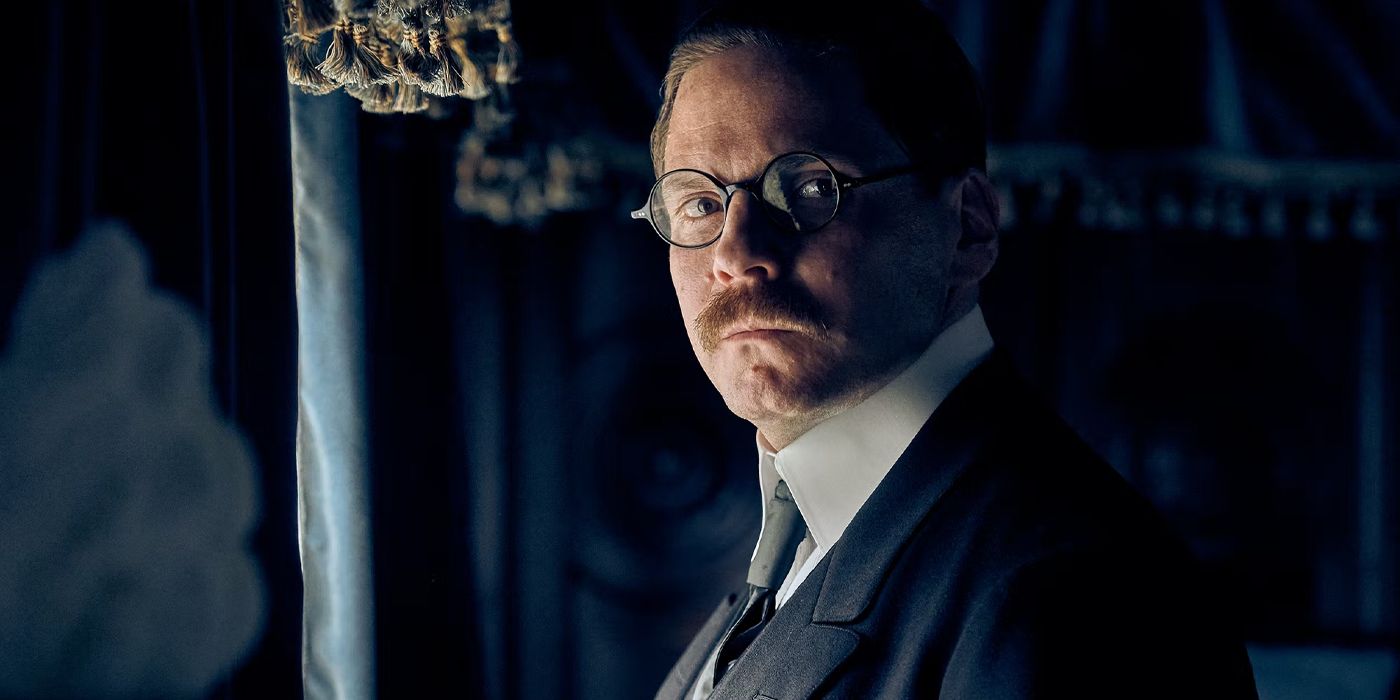Nearly one hundred years after Lewis Milestone adapted Erich Maria Remarque’s groundbreaking novel, German filmmaker Edward Berger has brought All Quiet on the Western Front to life with a fresh perspective—and the first German adaptation of a story deeply ingrained into the very DNA of the country. Set in the midst of World War I, the film’s focus narrows on Paul Bäumer (Felix Kammerer) and his small group of friends that get lured into war by the promise of heroism and patriotism. But there are no heroes in this war, a fact that Berger makes evident throughout the film. Paul might be the film’s protagonist—the heart and soul of the story that the audience sees the world through—but this is not a hero’s journey. All Quiet on the Western Front is a welcome departure from a long line of profound World War I films such as Sam Mendes’ 1917 or, more recently, Operation Mincemeat because there is no one to root for and there is no positive outcome on the horizon. It’s an interesting choice, but one that delivers a more honest and devastating story.
Berger and fellow screenwriters Ian Stokell and Lesley Paterson faithfully adapt Remarque’s somber approach and biting critique of war, by painting a brutal picture of its horrors, yet it is designed to allow the audience to arrive at its own emotional conclusion as the credits roll. War is hell and for a little over two and a half hours, All Quiet on the Western Front displays its ghastly horrors without ever venturing into voyeuristic consumption, opting instead to unsettle its audience with bleak realities and sobering truths. Throughout the film, Berger cuts away from waterlogged trenches and the mangled corpses of bright young men lured into early graves, to showcase the serenity of nature. The dichotomy between life and death stands in stark contrast with the horrors on display, even as a generation dies, creeks continue to flow, seasons change, and fox kits are born. Cinematographer James Friend brings about the perfect visuals, marrying the stunning, sweeping scope of their locations with the bristling intimacy of death and mortality.
In his first performance on-screen, Kammerer proves himself as a promising newcomer on the global stage. Paul Bäumer is not an easy role to take on; the physicality of the role alone might crush a performer, and that’s without considering the great emotional toll undertaken to portray the shame, depravity, and agony of war. Paul is the heart of the film, and Kammerer effortlessly bares his soul to the audience as the war takes and takes and takes from his character. His performance is made even better by those around him, who revel in quiet moments of humanity with him and mourn with him for the ghosts of men who have quietly been dying as they lived.
A long time ago, American anthropologist James Deetz posited that the past can be seen most fully by studying the small things so often forgotten, and this seems to be the unexpected thesis of Berger’s adaptation. His cast of characters finds favor with the audiences through small, tangible personal effects that carry through the film. For Franz (Moritz Klaus), it's a handkerchief from a passing paramour named Eloise—a trinket that brings a moment of reprieve to his fellow soldiers as they relish in the femininity her existence brings to the testosterone-laden bunks; for Kat (Albrecht Schuch) it’s a matchbox that he keeps a beetle within—a beetle that escapes war with its life when the men are left for the beetles to consume; for Albert (Aaron Hilmer) it's a poster that he finds that allows him to escape the horrors and dream about the women he’ll never know; and for Ludwig (Adrian Grunewald) it's the glasses he is given by the military to replace his own spectacles. But more profound is the fact that Paul has no touchstone, no trinket in his pocket that helps to carry him onward, because he carries those around him— Franz, Kat, Albert, Ludwig, and Tjaden (Edin Hasanovic)—to the front lines with him.
Unlike previous adaptations of Remarque’s novel, Berger instills All Quiet on the Western Front with historical elements that further underscore the shame of war. This element takes shape in the form of real-life historical figure Matthias Erzeberger (Daniel Brühl), who helped Germany forge a path towards an armistice with France, and was later assassinated for those efforts. There is also the fictionalized career general, who balks at the idea of peace treaties and is so enraptured with the idea of patriotism that he is driven to lead an army of beleaguered soldiers to their deaths, rather than embrace the cease-fire that waits for them on the horizon. Both figures symbolize the costs of peace: warmongers will always march their soldiers into the maw of death, while they watch from lofty seclusion, while the peacekeepers risk their safety for the promise of a better future.
All Quiet on the Western Front has a stunning sound design; one that sets teeth on edge and rattles within the chests of its audience. As the war machine wages on, Berger utilizes the jarring and ominous music of a harmonium to break through moments of reprieve like a hammer striking an anvil, signaling the ever-waging war that is larger than its cast. It cuts through quiet moments, shattering serenity and echoing like a reminder of how war destroys beauty.
Over one hundred years ago World War I devastated a generation, ten years ago there was a war that never truly ended, and presently a war wages on with flames of devastation that no one wants to stoke. Berger’s All Quiet on the Western Front offers the same reminder that Remarque’s novel presented: nationalism kills only for the glory of ego and offers shallow graves in foreign lands instead of heroic homecomings. It is impossible to watch the film without being affected by the horrors of pitting man against man to placate the egos of tyrants with chips on their shoulders. The first adaptation came at the onset of even worse horrors than World War I, and it’s hard not to wonder if this adaptation might be able to sway the masses to lower their angry fists before it's too late once again.
Grade: A
All Quiet on the Western Front is currently playing in select theaters and comes to be on Netflix on October 28.



